
Written by Jen Golay

My favorite thing to photograph will always be flowers.
If that wasn’t obvious by the article I wrote about floral macro photography on a budget, let me just state it flat out: I love photographing flowers!
One of my first forays into macro or macro-ish floral photography was when I bought a Lensbaby Velvet 56 in 2017. I had seen a friend’s floral images with one and just had to have it in my arsenal.
Find the Lensbaby Velvet 56 on Amazon.




The Lensbaby Velvet Series
Since the company began in 2004, Lensbaby has been known for its special effect lenses and accessories.
The Lensbaby Velvet 56 arrived on the market in 2015, followed by the Velvet 85 and the Velvet 28. The series is available for multiple camera mounts: Nikon, Canon, Sony, Pentax, and Fuji cameras.
It’s not an inexpensive piece of gear. Depending on the focal length, a Velvet lens will run around $450-$550. For this review, I am going to focus on the Velvet 56.


An Overview of the Lensbaby Velvet 56
The Lensbaby Velvet 56 is a 56mm f/1.6 lens. This is a great all-around, nifty-fifty focal length great for portraits, landscapes, and close-ups.
As a macro lens, it has a 1:2 ratio, with a minimum focus distance of 5 inches.
I feel that the main reason to purchase a Velvet lens is for the soft focus or “velvet” effect produced at the wider apertures, as well as its ability to focus on subjects quite close.
One of the first things you’ll notice about this lens, especially if you’ve used the Lensbaby Composer Pro and its optic swap system, is that this is a well-built, high quality lens.
It is of metal construction with a smooth focus ring and aperture ring, and has a solid feel and heft weighing of 14.46 ounces or 400 grams.
It is a completely manual lens, although the specs say that it works in aperture priority mode. I use it completely manually on my Nikon F100.
The lens is generally easy to use and shoots like any other manual lens in your camera bag. However, there are a few things you should know about the Velvet 56 before you decide if it’s a good lens for you to add to your camera bag.

The Velvet Effect
When shooting the Lensbaby Velvet 56 wide open at f/1.6 up to f/2.8 your images will have a soft-focus, Vaseline on the lens, velvety look.
It’s a very specific effect that can work well in some situations and is a complete failure in others. It’s almost like a glow or a halo around the sharp edges in the image. I’ve also heard it called a “painterly look.”
In my experience, people either love the look or hate it. I think it’s a cool, unusual effect that can be used creatively but in limited ways.
For some, the expense of the lens for such specific uses will not be worth it, and they may choose to use some of the less expensive floral methods I’ve written about previously and add a Gaussian blur in Photoshop.
However, on film, I feel like this lens effect can work well with the grain of the film to create a truly unique look.
This glowing effect is really only visible at the three widest apertures (f/1.6, f/2, and f/2.8). From f/4 to f/16, there is no special effect visible.
Don’t forget the bonus that it has a short minimum focus distance, and that it can also produce a crisp, sharp focus image at these apertures.

Click to enlarge

Using the Velvet Effect to Enhance Your Images
So, when might you want to employ that velvety glow available with the wider apertures?
It depends on your intentions for the image.
I’ve found that for what I like to shoot—florals, portraits, travel, and landscapes—the lens can be used to create a painterly effect that is fun to experiment with.
Personally, I like to use it on subjects with texture such as flowers, trees, and grasses. I’ve found that the glowing halo on urban scenes or subjects with straight lines and sharp edges grates on me visually. I want those lines and edges to be sharp.
I’ve also found that it can be used for a few shots in a portrait session. I would not shoot the entire session with this lens, or at least not at its widest apertures, but a few images such as close-ups or details with this painterly effect can be a unique addition to a portrait session.



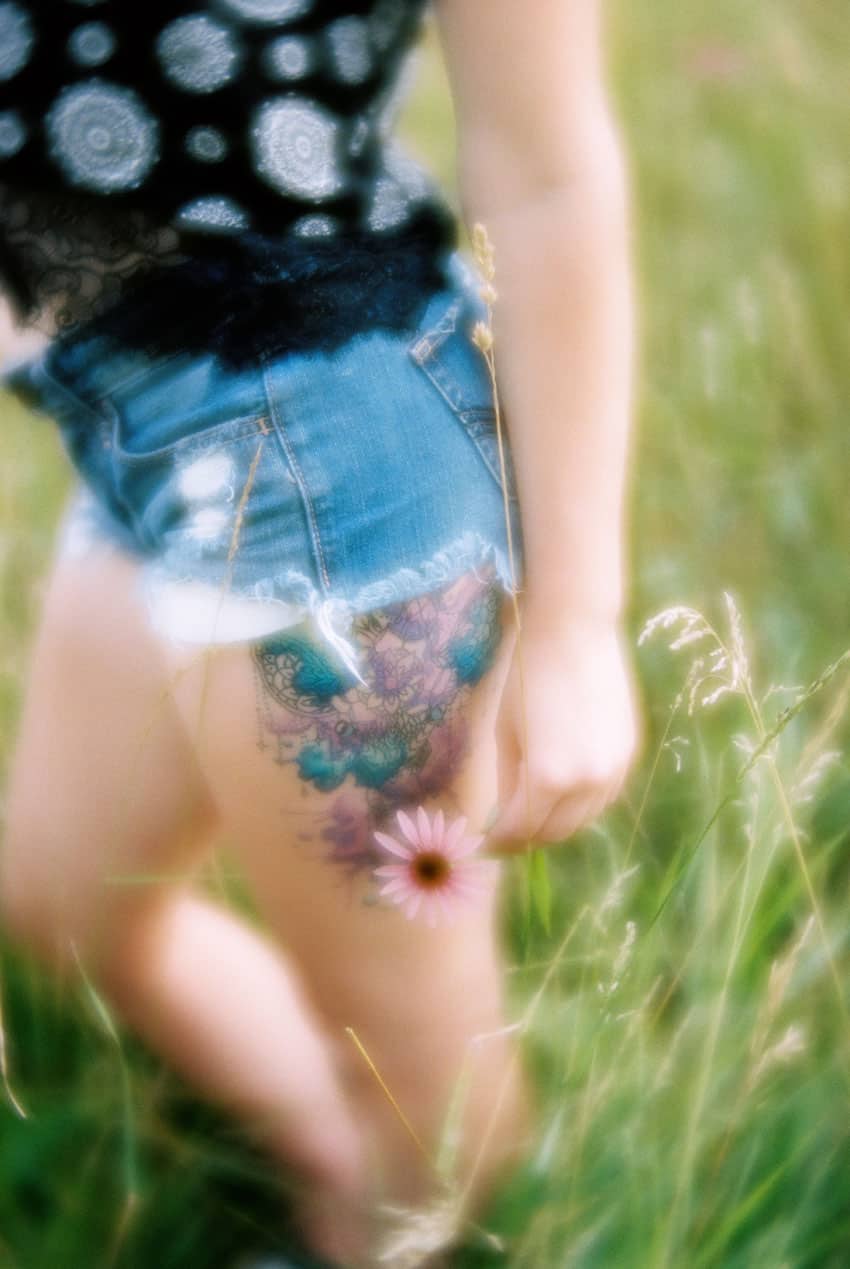
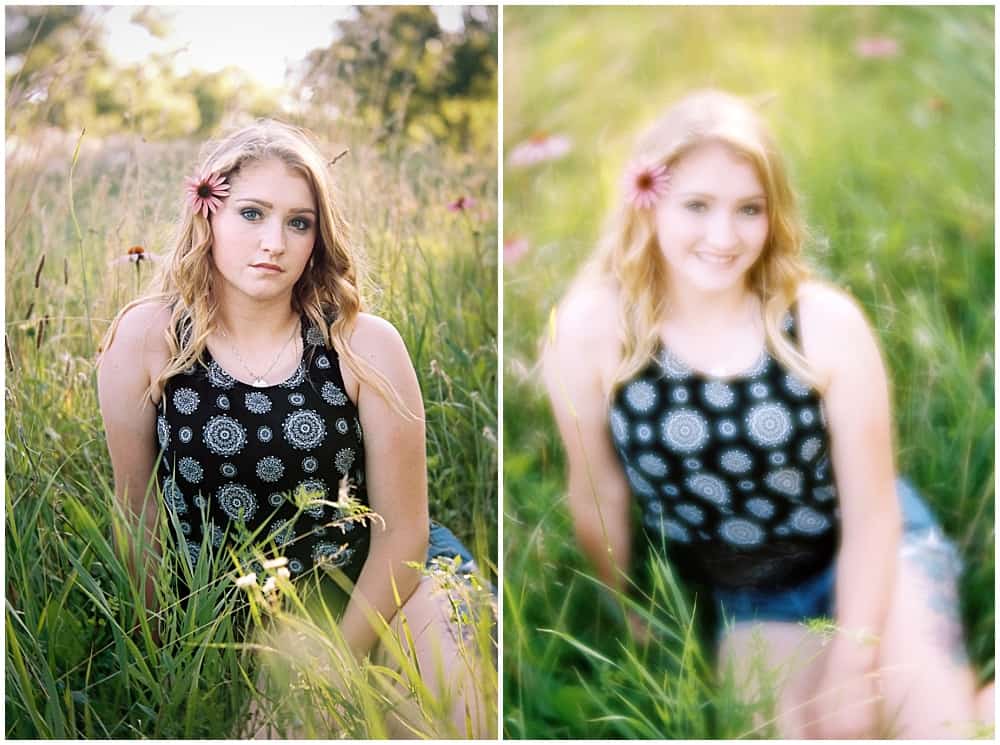

I find I almost always want to get this lens out to photograph my garden each summer. I love the painterly look on petals and leaves, and I also love the sharp macro images it creates with the smaller apertures.
Pros and Cons of the Lensbaby Velvet 56
There are a few pros and cons to the Lensbaby Velvet 56 besides whether you like the effect it produces.
The pros for this lens include the unique effect it produces at wider apertures, its solid design and construction, a macro ratio of 1:2 with it’s small minimum focusing distance, a sharp focus at smaller apertures, a rich background bokeh, and its availability for multiple camera systems.
Some of the downsides to shooting with the Velvet 56 include that it’s a fully manual lens and does not couple electronically with your camera, the cost of the lens, the more you stop down, the darker the viewfinder becomes, its long focus throw, and it’s a very niche lens that is not for everyone.




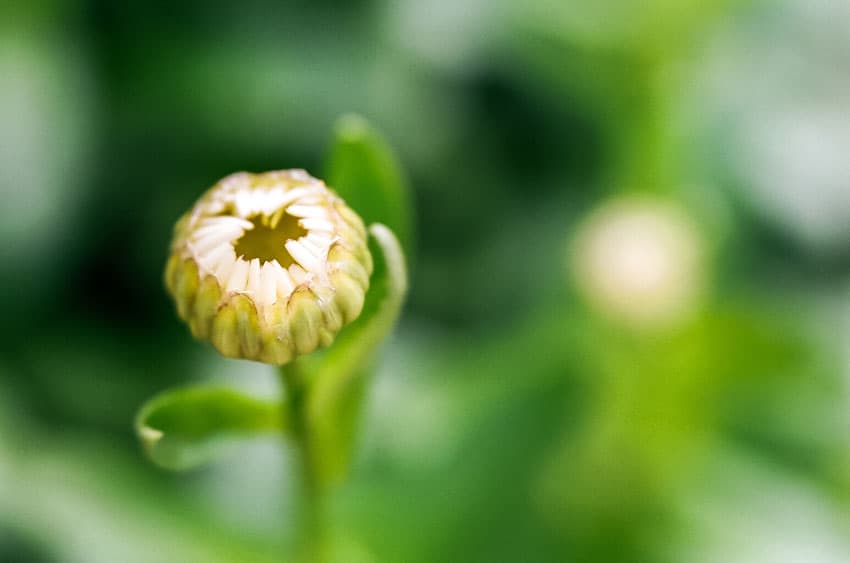
Tips for Using the Lensbaby Velvet 56
Tips for shooting with the Velvet 56 will be very similar to any other macro-type situation—choose good light, avoid subject and camera movement, and good composition.
But let me add a few hints specific to this lens.
Use Bright, Soft Light
Be sure to shoot in an area with bright, soft light. Whether you’re shooting wide open for the glow effect or stopped down, you’ll need bright light.
When shooting at the widest aperture, the glow effect can be very pronounced, and you’ll need the bright light to see to focus.
If you’re shooting at smaller apertures, the lack of an automatic diaphragm will make the viewfinder darker since less light will be coming through the lens.
Move to Achieve Focus
Use your focus assist light or beep to help you achieve good focus for the same reasons I recommend bright light.
The lens has a long focus throw, so you have to turn the focus ring a lot to change the focus.
To make this less of an issue, I usually get a general focus distance I like for the framing of my image and then I move the camera back and forth slightly to achieve focus.
Bracket Your Images
When you are just starting out with your Velvet 56, bracket a few images with different apertures to see when you like the painterly halo and when you like your images a bit sharper.
Use Film Speed to Enhance or Tone Down the Velvet Look
Depending on how much you love the painterly effect, choose a film speed to enhance the look or to tone it down a bit.
If you like the painterly effect more, choose a faster film (such as a film with ISO 400 or more). The more visible grain will increase the look.
If you like the painterly look, but need a bit less glow, choose a slower film speed (such as a film with ISO 100 or 200) with less pronounced grain.
I prefer this lens on a film camera to a digital camera because I like the added texture that the grain adds to the image.






Final Thoughts
If you’re looking for a lens to give you a creative challenge, and you don’t mind the price tag, the Lensbaby Velvet 56 might be just the ticket.
The Velvet 56 is great for macro shots, the painterly halo glow, floral images, a few niche portraits, and to inspire you creatively.
While it has a few drawbacks, it is a fun and creative addition to your camera bag.



Thank you so much, Jen! Jen is a regular contributor here at Shoot It With Film, and you can check out her other articles here, including How to Shoot Kodak Gold 200 and Olympus Pen F Half-Frame Film Camera Review. You can also check out more of Jen’s work on Instagram.
If you have questions about the Lensbaby Velvet 56 or macro photography, leave them below in the comments! And you can pick up a Lensbaby Velvet 56 for yourself on Amazon here!
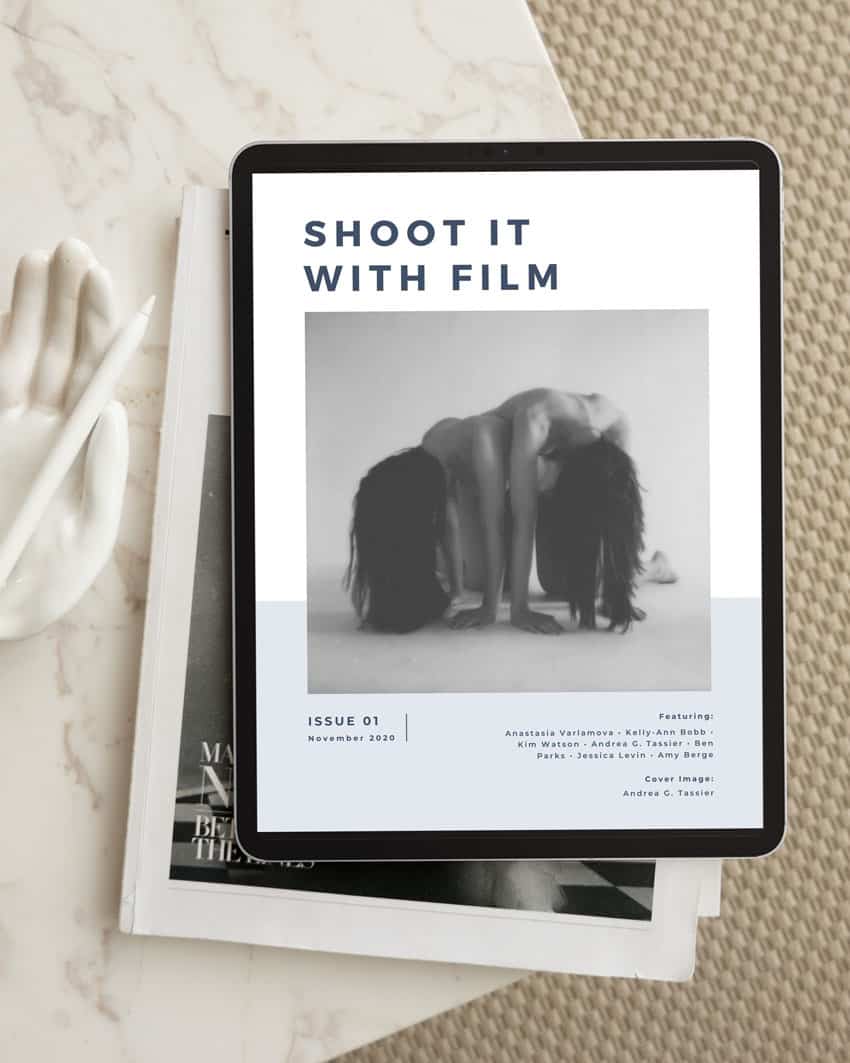

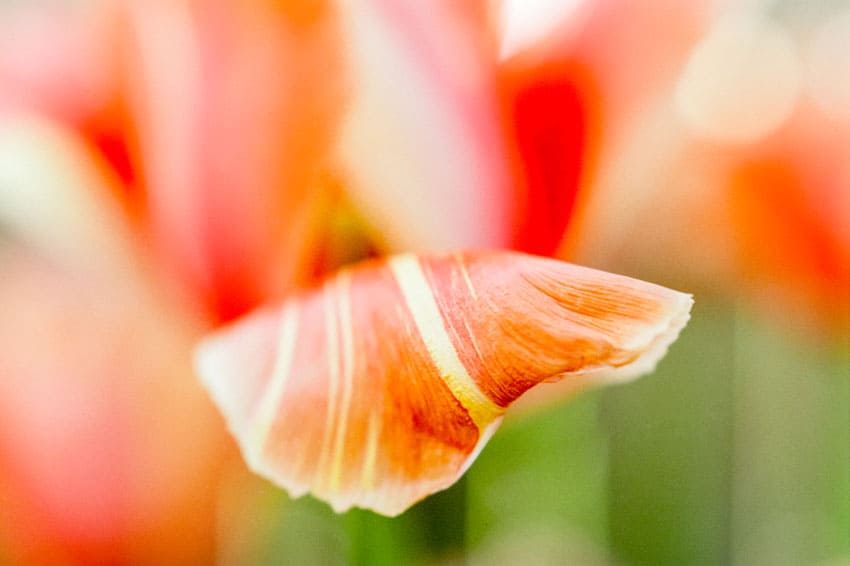





Leave a Comment